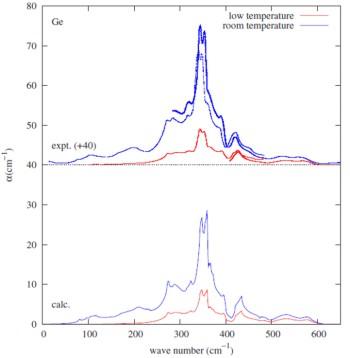Summary
We maintain a suite of programs that can help calculate the optical properties of many solids throughout the electromagnetic spectrum.
Description

By optical properties, we mean those of the following sort: the index of refraction n and the index of absorption k, from which one can calculate the dielectric function, loss function, absorption coefficient, reflectance, and so forth from standard formulas. All of these quantities, it should be noted, are also functions of wave vector q and frequency of excitation, as well as electric-field polarization direction. There are two transverse polarization directions relevant to the tradition light-matter interaction, and one longitudinal direction relevant in certain instances of scattering, such as electron and inelastic x-ray scattering.
Major Accomplishments
A higher-level overview of our project is provided on the link, Theory of the Optical Properties of Materials. Samples of our results for valence and core electron excitations are provided there.
Another area of our research relates to far-infrared absorption spectra that include one- and two-phonon features, such as in silicon (Si) and germanium (Ge). The figure at the right illustrates the absorption coefficient of germanium, as measured and as we have computed from first principles. Ordinarily, germanium is presumed by inversion symmetry to not be an infrared-active material because of lattice vibrations. However, it is known that pairs of phonons at compensating crystal momenta can absorb light, and our calculations aimed to estimate the efficiency of this process.
For additional details, there has been much work done both inside and outside of NIST. Below, we would highlight an incomplete, topical survey of our contributions by noting the following publications:
For an illustration of the significance of this work to the semiconductor industry, see Intrinsic birefringence in calcium fluoride and barium fluoride and Ferroelectric distortion in strontium titanate thin films on Si(001) by x-ray absorption fine structure spectroscopy: Experiment and first-principles calculations.
For the earliest valence BSE paper, see Optical absorption of insulators and the electron-hole interaction: An ab initio calculation and Ab initio calculation of epsilon-2 of omega including the electron-hole interaction: Application to gallium nitride and calcium fluoride.
As an illustration of the core BSE work, see Scheme to calculate core hole-electron interactions in solids.
As an illustration of the calculation of self-energy and lifetime-damping effects, see Electron self-energy calculation using a general multi-pole approximation.
As an illustration of insight gained into electronic structure through theoretical modeling of inelastic x-ray scattering, see Final-state symmetry of Na 1s core-shell excitons in NaCl and NaF.
As an illustration of analysis of far infrared absorption due to phonons, see Two-phonon infrared spectra of Si and Ge: Calculating and assigning features.

